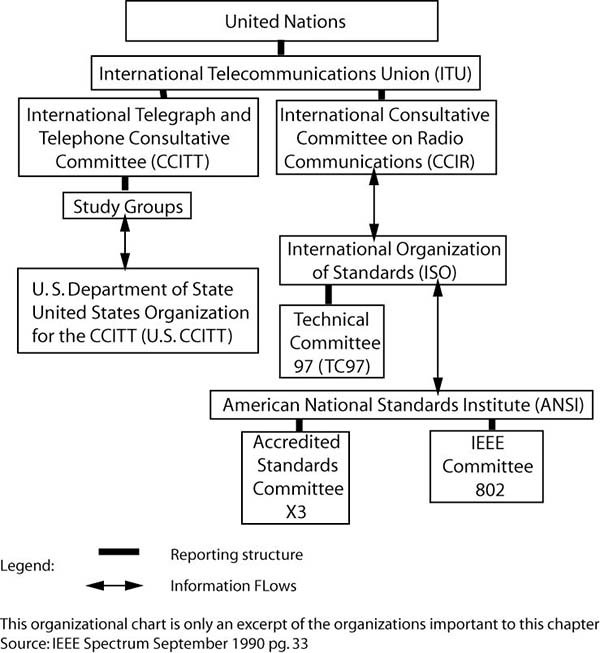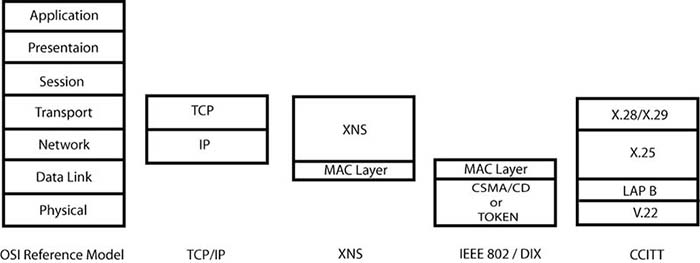Chapter 11 - Standards: An Enabling Institution 1979-1984
11.1 Standards Making and the OSI Reference Model
While most of the history observed in this reconstruction focuses on the emergence of new markets pioneered by new firms, market order does not always coalesce when their exist many new technologies to solve similar problems. The use of institutions to solve such impasses often proves successful. This chapter recounts the histories of how standards were created to bring market order to local area networking and begin a period of explosive growth for Networking. The social entrepreneurs responsible for the creation of new standards-making institutions faced more political than economic challenges. To be successful meant securing the backing of existing authority structures and then leading frequently hostile parties to collective decisions. The two efforts examined most closely are those of the Institute of Electrical and Electronics Engineers (IEEE) Committee 802 and the International Standards Organization Technical Committee (ISO/TC) 97 Subcommittee 16. The former is a United States organization and the latter an international one; albeit both were closely observed and influenced by individuals and organizations regardless of country of origin (See Exhibit 9.0 Standards Organizations).
Exhibit 11.1.1 Standards Organizations

With the ever-growing expectation of standards resolution, organizations enhanced or changed their technologies to conform to perceived outcomes. They were not always right. And sometimes being right had more to do with politics than technological superiority. In the end, the guiding architecture will be the Open System Interconnection Reference Model approved as a Working Draft by the ISO in late 1979. Based on layers and stacks, it represents a cumulative effort dating to the design of operating systems and the experiences with Arpanet (See Exhibit 9.1 Layers and Stacks). Technological evolutions and migrations to be studied will be:
- Xerox’s Pup Protocol to XNS
- DARPA’s TCP Protocol to TCP/IP
- IEEE Committee 802 standardizing Ethernet (CSMA/CD) and token Protocols (Influenced by DIX (DEC, Intel and Xerox) and IBM and many others)
- ISO creating Transport and Network Protocols influenced by the CCITT, ECMA, DIX and XNS and TCP/IP
- ISO creating Data Physical Protocols influenced by the CCITT and IEEE
Exhibit 11.1.21 Layers and Stacks
